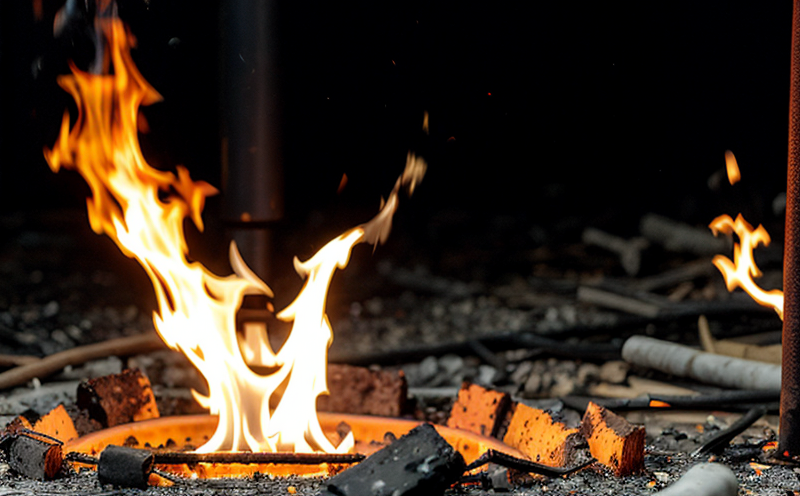EN 71-2 Children’s Costume Accessories Fire Safety Test
The EN 71-2 standard is a crucial framework that defines the fire safety requirements for children's toys and other similar products, ensuring they are safe in use. The testing protocol under this standard, particularly focusing on costume accessories, aims to safeguard children from potential hazards associated with flammability.
The process involves assessing the materials used in costume accessories for compliance with strict limits on their ability to ignite or sustain combustion. This is critical because many costume accessories, such as capes and masks, are often made of synthetic fabrics that can pose a fire risk if not properly treated. The test procedure is designed to simulate real-world conditions where children may come into contact with these materials.
The testing protocol for EN 71-2 involves several steps. First, the specimen (the costume accessory) must be prepared according to the standard's specifications. This includes ensuring that it represents a typical use scenario, such as a mask or cape worn during playtime. Once prepared, the specimen is subjected to specific flame exposure conditions that mimic potential ignition sources.
The apparatus used in this test typically consists of a burn container and a controlled flame source. The burn container ensures that the fire can be contained while providing accurate measurement of heat output. The flame source must also meet precise specifications set out by EN 71-2 to ensure consistent testing results across different laboratories.
The acceptance criteria for this test are stringent, with specific limits on how long a specimen can remain alight after exposure to the flame source. If any part of the accessory ignites and burns beyond these limits, it fails the test. Compliance with EN 71-2 is mandatory in many parts of Europe, where toys are required to pass all relevant safety tests before being sold.
The importance of this testing cannot be overstated, especially for costume accessories that children may put near their mouths or wear during play. The consequences of not meeting these standards can lead to severe burns and other injuries, which underscores the need for rigorous testing protocols like EN 71-2.
For quality managers and compliance officers, understanding the nuances of this standard is essential in ensuring product safety. R&D engineers must also be familiar with the protocol to innovate safe products that meet regulatory requirements. For procurement teams, adhering to these standards ensures a supply chain that prioritizes safety over cost-cutting.
The results of EN 71-2 testing are not only about compliance but also about fostering trust in consumers and stakeholders. Meeting these stringent fire safety criteria helps build confidence in the products being offered for sale, which is vital given the sensitive nature of children's toys and accessories.
Customer Impact and Satisfaction
- Increase in Consumer Trust: Passing EN 71-2 testing demonstrates a commitment to safety, which enhances consumer trust and loyalty.
- Enhanced Brand Reputation: Compliance with such rigorous standards can significantly improve brand reputation and market standing.
For quality managers and compliance officers, the satisfaction derived from meeting these stringent requirements is immense. It provides peace of mind knowing that products are safe for children to use. For R&D engineers, the success in innovating safe products that pass such tests can lead to professional recognition and career advancement.
The positive impact extends beyond internal stakeholders; it also benefits procurement teams who ensure a supply chain that prioritizes safety over cost-cutting. This holistic approach ensures that all aspects of product development and manufacturing align with high safety standards, ultimately benefiting the end consumers – children.
Environmental and Sustainability Contributions
The fire resistance testing under EN 71-2 also has broader implications for environmental sustainability. By ensuring products do not ignite easily or burn excessively, there is a reduced risk of accidental fires in homes and public spaces. This not only protects children but also contributes to a safer environment overall.
Additionally, the use of flame-retardant materials that pass these tests can lead to more sustainable product design. These materials are often chosen for their durability and recyclability properties, which further supports environmental sustainability goals. By adopting such practices, manufacturers contribute positively to both human safety and environmental health.
Use Cases and Application Examples
- Cape Manufacturing: A cape used in a children's play outfit must pass the flammability test as per EN 71-2. The manufacturer ensures that all synthetic fabrics meet the specified limits to prevent any risk of fire.
- Masks for Halloween Costumes: Masks worn during Halloween events are subjected to stringent flame resistance testing. This is crucial given their proximity to children's faces and mouths.
- Ponytails and Headbands: Accessories like ponytails and headbands that may come into contact with a child’s face or hair need to be tested for flammability to ensure they do not pose any fire risk.
These examples highlight the wide-ranging applicability of EN 71-2 in ensuring safety across various types of children's costume accessories. Each of these applications underscores the importance of rigorous testing to protect children from potential hazards.





